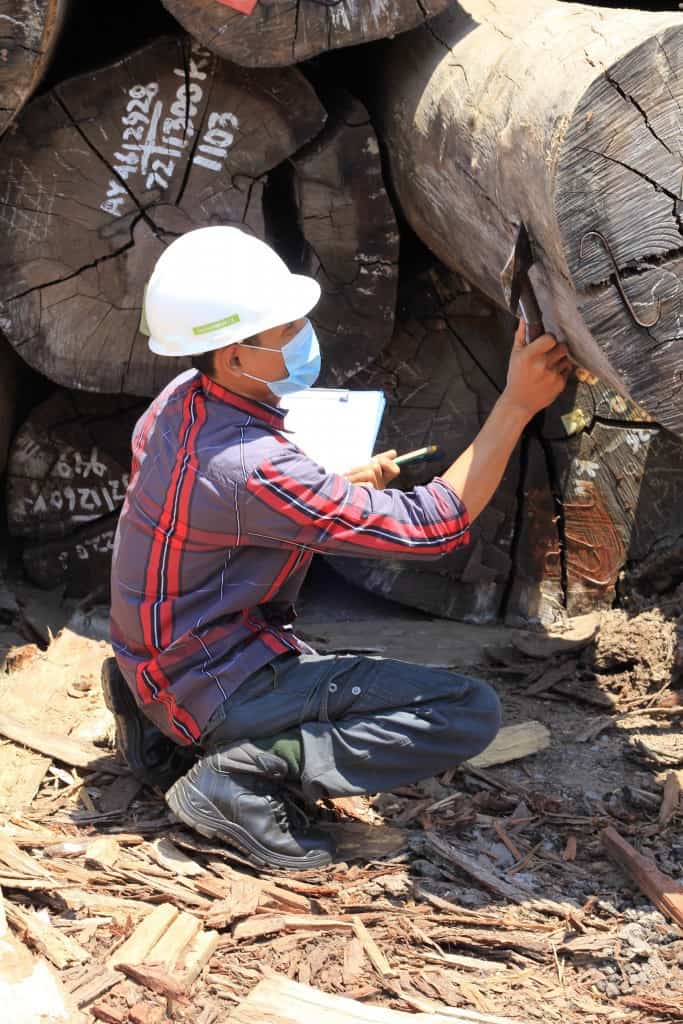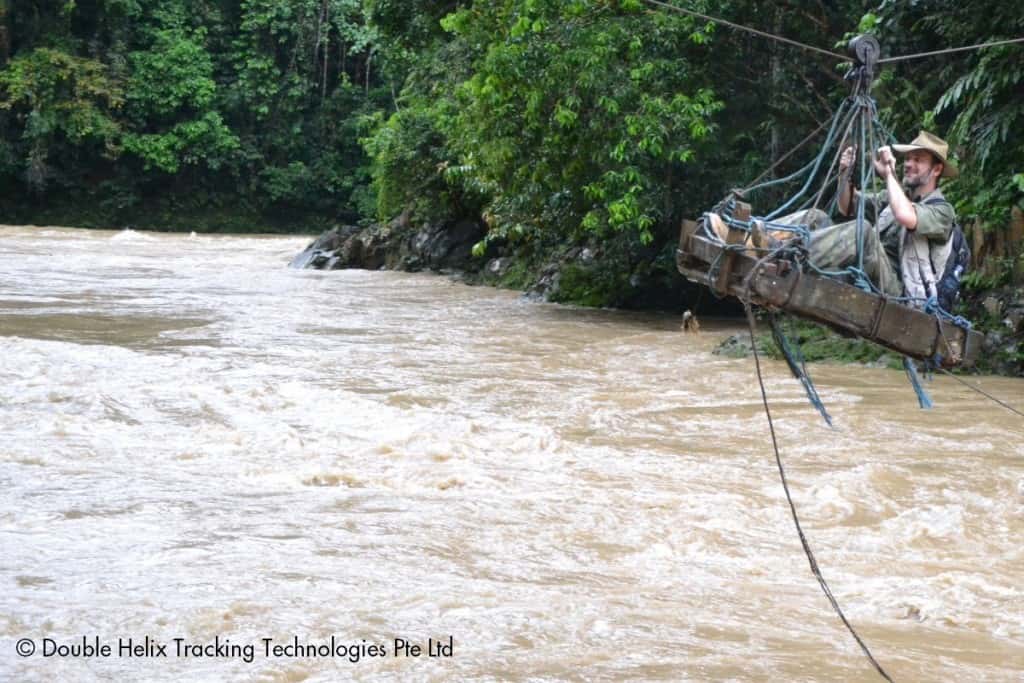Illegally logged timber
The management and sustainability of the world’s forests for the supply of ongoing timber resources, fauna habitat and local community wellbeing are things we must all embrace. The bid to stop illegal logging is one way that we in the timber and building industry can have an impact.
Since writing an article about Merbau in the Autumn 2013 issue of Building Connection, I have been approached many times about condoning the exploitation of a timber that is very environmentally sensitive. Most of the people who put forward such a view rarely know any of the real issues relating to the harvesting or supply of such timber and have made their minds up on a purely emotive basis.
Of course Merbau is only one of many timber species that falls into the category that could be considered environmentally sensitive. There are hundreds more rainforest hardwoods that most of us have never heard of that come from south east Asia into Australia as timber and timber products that could be of equal concern.
It’s not the actual individual species that are of concern but the source and the supply.
I mentioned in the article that the biggest issue facing the supply of Merbau is resource sustainability and habitat conservation. Some countries in the area have legal logging operations and are using their forest agencies to manage and maintain the remaining resources. The biggest issue facing the region is to stop illegal logging and the processes that allow the illegal logs into the legitimate timber trade.

Of course countries where these timbers and/or timber products are being marketed need to be part of the solution.
In 2008, the United States amended its Lacey Act to include plant products and as such have banned the importing of what they refer to as ‘illegal timber’, which includes all sorts of timber-based products such as lumber, plywood, veneers, furniture and paper. It was a very comprehensive amendment to their laws and has already seen some standout prosecutions under the Act.
Australia is also doing its part. On 29 November 2012 the Illegal Logging Prohibition Act came into effect which is now being updated by the Illegal Logging Prohibition Amendment Regulation 2013 on 30 November this year and it will, by design, have the same effect in Australia as the Lacey Act has in the U.S.
So what does this legislation mean to the builder or designer? There shouldn’t be any real change as far as usage goes; both the Act and the Amendment Regulation place the onus squarely on the processor (what we would refer to as the sawmiller) for logs processed in Australia (either from local or imported logs) and the importer for all timber and timber-based products.
We, the consumers, will be able to buy species like Merbau in future with confidence knowing that it is legally logged, has some form of chain of custody validation and is coming from sustainably managed forest areas. Builders and designers will also be able to give clients that assurance.
The only possible downside is some supplies of various timbers may reduce (because of the implication of illegal logging). Perhaps the cost of processing and handling could increase, therefore pushing up the price a little as the producers and importers put in place the mandatory government requirements. That said, many of these practices are in place to import into the U.S. and Europe.
It is worth noting that third party accreditation systems such as Forest Stewardship Council (FSC) and Programme for the Endorsement of Forest Certification (PEFC) already provide chain of custody systems.
DNA tracking update
Last year when I wrote specifically about Merbau, I mentioned a new system of DNA testing to verify the legitimacy of the timber. Due to its economic position in the Asian timber market, Merbau is still one of the few species that has been fully screened so that when they test a sample they can almost tell you exactly where the tree was growing.
By being able to pinpoint its source they can ascertain if it was from a legally logged source and track it back through the supply chain if necessary.
The University of Adelaide is at the forefront of this DNA tracking system, which requires what they call species ‘mapping’. Merbau for instance grows in a wide band around the world and once a log is processed it’s almost impossible to know where the timber came from unless you can compare DNA samples from all growing areas. This has been accomplished for Merbau, Teak and about another 40-50 species worldwide, but that is only the tip of the iceberg to totally control illegal logging.

Double Helix Tracking Technologies, which is based in Singapore and works in conjunction with the University of Adelaide, can establish the mapping areas, provide the in-field testing and source the DNA samples. They also provide a chain of custody service to industry called CertiSource and are verifying supplies of Merbau and other species into Australia for importers such as Simmonds Lumber (the first timber importer in the world to use the DNA process).
With the Act already in force and the Amendment coming at the end of this year, most importers are working to get their due diligence programs in place. Double Helix is already working with other timber processors, exporters and importers to provide the DNA system across an ever-increasing range of species; they are currently working on mapping a series of African species, including Iroko and Sapele, both of which are used widely throughout the world.
Double Helix is also talking to the Australian Government about providing sample testing services to assist in the customs monitoring and investigation of imported timber and timber products. This is a major part of the enforcement requirements of the Prohibition Act and DNA processing will certainly simplify the task.
I recently spoke to Andrew Lowe, professor of Plant Conservation Biology at the University of Adelaide and the chief scientific officer for Double Helix Tracking Technologies. He indicated that the system of DNA processing stems from species identification ‘barcoding’ where there is sequence data to provide a genetic ID for approximately 50,000 species of flowering plants, which includes approximately 10,000 tree species.
From there the next level is DNA fingerprinting, which provides the markers of individual timber species and can identify pieces of timber from samples as small as a cubic centimetre. This can also provide systems for tracking of logs and timber along a supply chain. There are already available methods to identify more than 200 tree species by DNA fingerprinting, a service that could be provided to industry or the general public by the University of Adelaide, or Double Helix, where necessary.
The highest level in the program, the system to check illegally logged timber, which requires the mapping of genetic data to allow the identification of the region of origin of species, is still in its infancy and requires much more funding to substantially improve the species database.
As I indicated earlier, there are only approximately 50 tree species which have been substantially mapped, although as demand requires, such as with the work currently being undertaken in Africa, the database is increasing.
It is a very costly process as the species area mapping can be extensive and the individual sample processing has to be undertaken to provide each species with its own unique data base. However, it is vital if we are to protect and maintain these very valuable and irreplaceable tree species.
Let’s not be too concerned if this ban, coming into Australia through the Illegal Logging Prohibition Act, causes us some inconvenience.
Ted Riddle has 47 years’ experience in the timber industry as a merchant, importer, producer and marketer.
